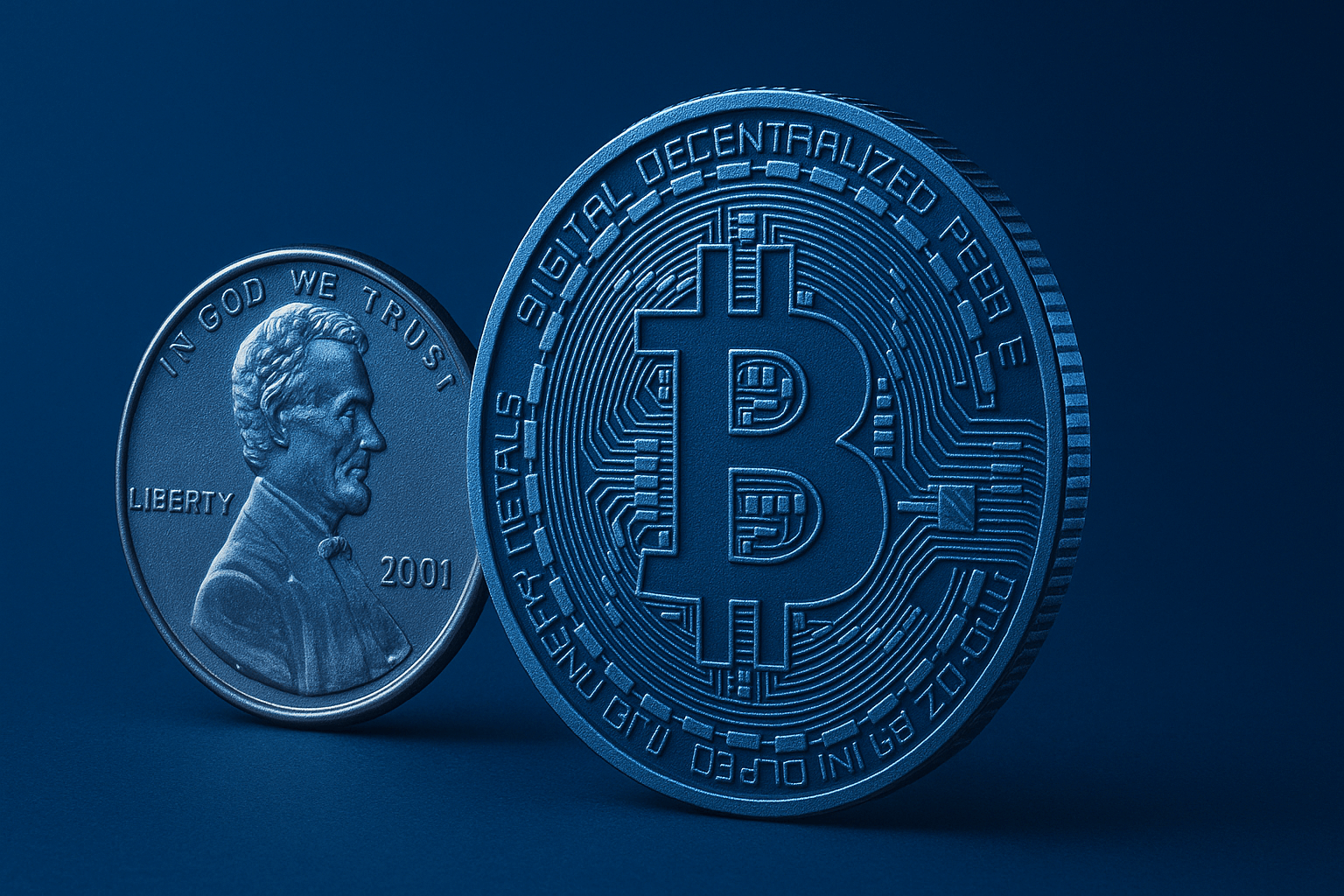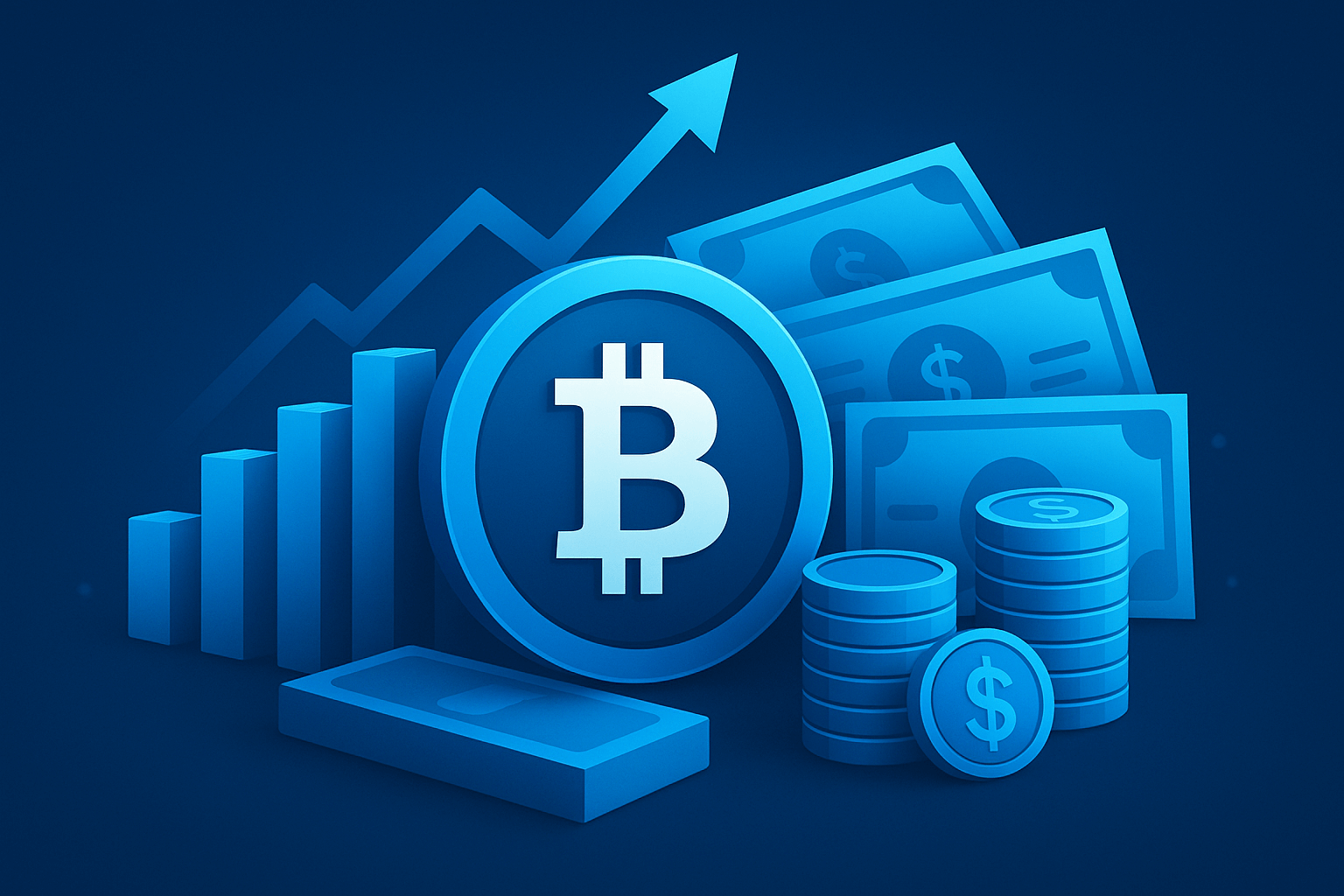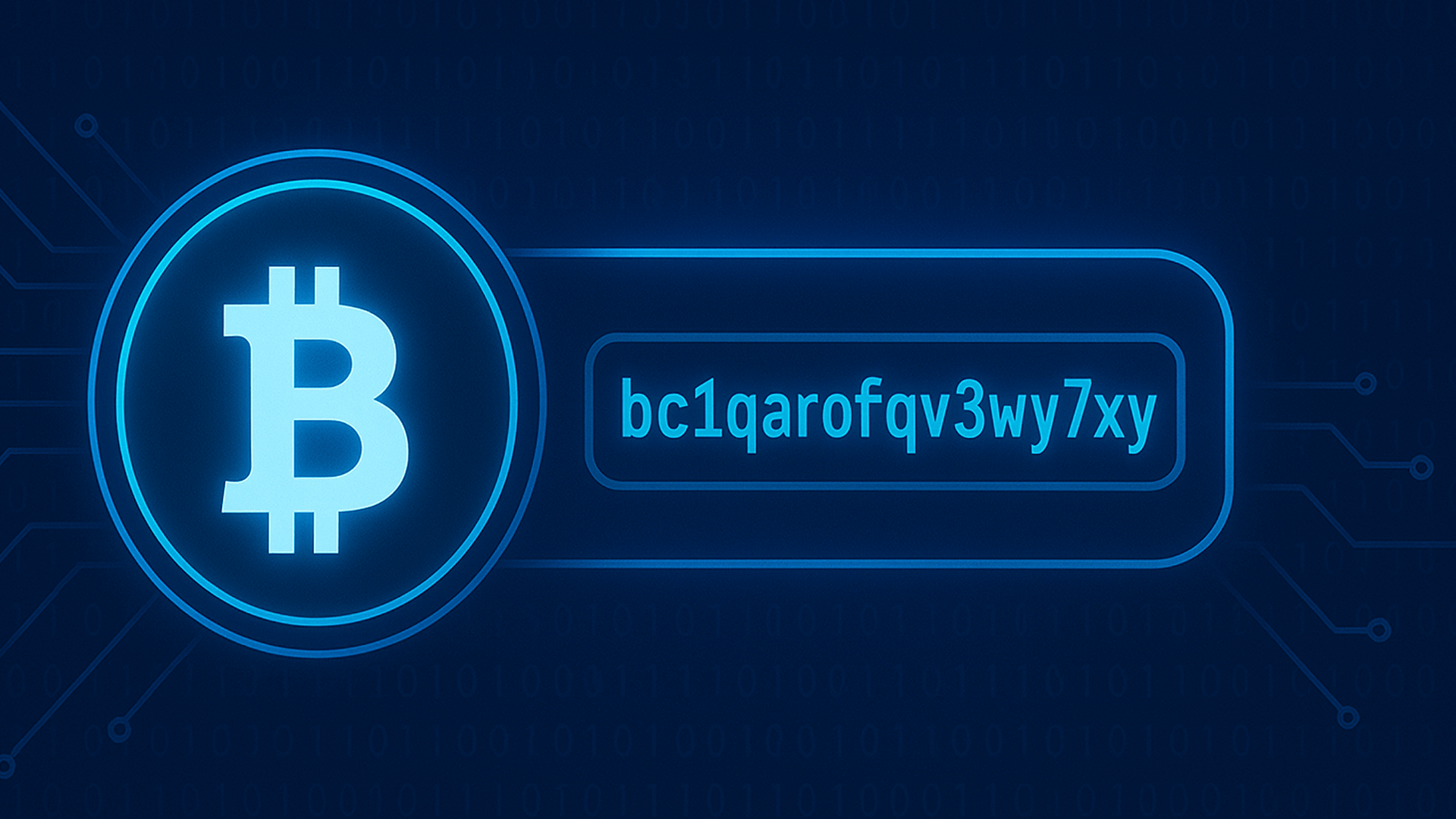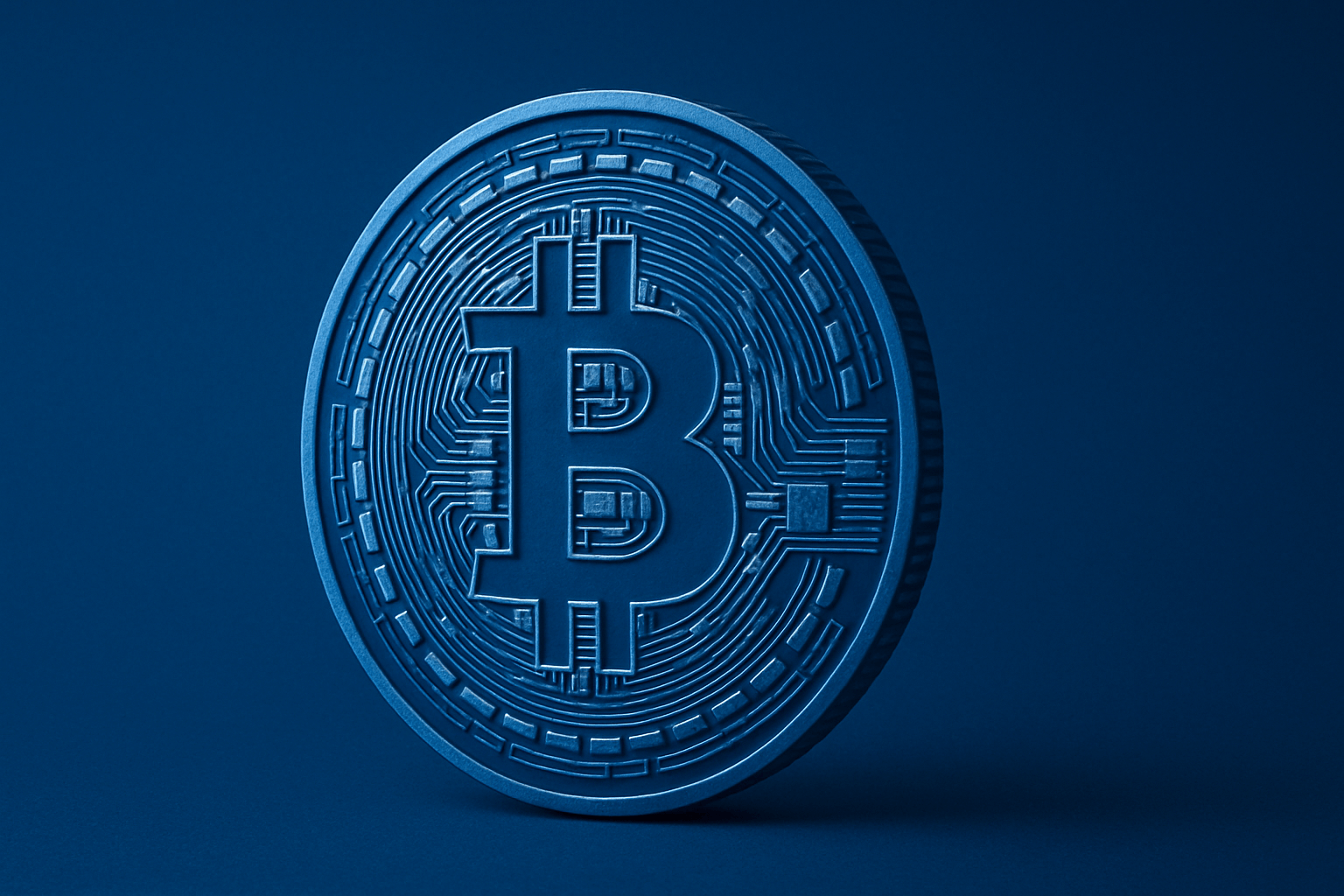Bitcoin’s first decade was a wild experiment; the next one looks more like an expanding economy. With better tools and clearer rules in many regions, there are now practical ways to earn, from simple cash-back in BTC to careful trading, from accepting payments to long-term investing via spot ETFs. This guide blends hard-won lessons, beginner-friendly explanations, and honest risk notes. It avoids hype, shows where numbers come from, and gives you concrete playbooks you can adapt, whether you have ten minutes a week or you’re ready to build a side business around Bitcoin.
Why Bitcoin creates real earning opportunities now
Bitcoin has matured from a hobbyist project into globally accessible infrastructure. You can buy it via mainstream brokerages, track it on professional dashboards, and move it across borders in minutes. That doesn’t make it a guaranteed ticket to wealth, but it does open a menu of ways to participate. You can think like a long-term saver building a position slowly, or like a freelancer who chooses to get paid partly in BTC, or like a methodical trader who risks small amounts to improve skill over time.
Crucially, the surrounding ecosystem has caught up. Wallets are easier to use, self-custody is more approachable, and compliance tools simplify taxes. Payment rails such as the Lightning Network make tiny, instant tips possible, which was unthinkable with only on-chain transactions. Market data is more transparent too. For example, you can compare exchange volumes and fees openly and check on-chain trends using public dashboards. When I tested a handful of popular on-ramps, the difference in fees and spreads alone changed my net results more than any clever tactic.
Reliable information helps you dodge bad ideas. The past included lending blow-ups and overleveraged trading crazes; several cases ended with investigations, and in some disputes courts found claims unproven, which underlines how messy things can get. Earning with Bitcoin is less about finding a secret trick and more about stacking small, repeatable advantages—lower fees, better security, disciplined plans—and letting time work for you.
Set up right: wallets, exchanges, security, and fees
Before chasing returns, build a foundation that protects your downside. A good wallet, a trustworthy on-ramp, and a simple security routine can save you money, stress, and hours of cleanup. Think of this setup as installing seat belts and ABS before learning to drive faster.
Pick a wallet you can actually use
Wallets come in two broad flavors. A custodial wallet is like a bank app: someone else holds the keys, you get convenience. It’s fine for small, everyday amounts while you learn. A self-custody wallet gives you full control, which also means full responsibility. Mobile wallets work for daily spending and small savings, while hardware wallets are the preferred place to keep larger balances you don’t plan to move often.
Every self-custody wallet has a seed phrase—typically 12 or 24 words—that can restore your funds if your device is lost. Treat it like the master key to your digital safe. Write it down on paper or a metal backup and store it in two separate, secure places. Never type it into websites, photos, or cloud notes. If a support agent asks for it, that’s a scam. I once ran a “phishing drill” with a friend: we tried to trick each other with fake pop-ups and messages. That exercise alone made us both immune to most social-engineering tricks.
- Custodial: easiest start, quick recovery, but counterparty risk.
- Self-custody: maximum control, higher responsibility, ideal for savings.
Choose a trustworthy on-ramp
A regulated exchange or broker lets you move from your local currency into Bitcoin. The differences between services look small at first—fractions of a percent in fees, slightly wider spreads—but over a year of recurring buys they add up. When I compared fees on several venues by doing identical $100 purchases, the total “all-in” cost varied by more than 0.7% per buy (estimate by independent researchers). That’s an extra week of DCA for free if you pick well.
Check identity verification, two-factor authentication, withdrawal allowlists, and support responsiveness. Do one tiny deposit and withdrawal to test the pipes. Keep records. Not every big brand fits every country, so verify local compliance and supported payment methods. Official websites to research include coinbase.com, kraken.com, and binance.com (availability depends on your jurisdiction).
Security is part of your profit
Security habits directly affect returns: a hacked account or a rushed mistake can wipe out months of gains. Start with unique, long passwords stored in a password manager, and use an authenticator app rather than SMS. On exchanges, enable withdrawal allowlists so that coins can leave only to addresses you preapprove.
For meaningful holdings, consider a hardware wallet or even multisig (multiple keys needed to spend). Keep your device firmware updated and practice a recovery drill with a small amount so you’re confident you can restore funds if a device fails. Think of it as a fire drill for your savings.
- Authenticator app over SMS
- Password manager, not reused passwords
- Withdrawal allowlists and small test withdrawals
Understand costs and taxes early
Costs come in four flavors: trading fees, spreads, network fees, and funding or borrowing rates if you touch derivatives. You’ll also see deposit/withdrawal fees in some regions. Track your “effective fee,” which is the total slippage from your target price, not just what the fee schedule says. Taxes matter too: in many countries, buying is not taxable, but selling, swapping, or spending can create a taxable event. Keeping clean records from day one saves headaches.
Use crypto tax software to log dates, amounts, cost basis, and proceeds, and export reports to your accountant. I tried three major tools and found that automatic exchange API sync plus a manual wallet import gave me the best accuracy. Note that rules vary by country; check official guidance where you live, and document your assumptions for your tax preparer.
| On-ramp | Maker/taker fees (spot) | Spread observation on $100 buy | Notes |
| Coinbase (coinbase.com) | Varies by tier (estimate by independent researchers) | Moderate (estimate by independent researchers) | Easy UI, strong compliance, higher retail fees |
| Kraken (kraken.com) | Competitive for higher tiers (estimate by independent researchers) | Lower than average (estimate by independent researchers) | Good API, broad fiat options |
| Binance (binance.com) | Low for high-volume users (estimate by independent researchers) | Low–moderate (estimate by independent researchers) | Availability varies by region |
Low-effort ways to “stack sats” without trading
Small, automated wins compound. If you’re not ready to analyze charts or build a business, you can still add to your Bitcoin position through everyday activities. These methods won’t make you rich overnight, but they reduce friction and build momentum.
Cashback and round-up apps that pay in BTC
Cashback services let you earn a small percentage of purchases back in Bitcoin. Some apps partner with retailers; others work via browser extensions. Round-up features skim spare change from card transactions and convert it to BTC automatically, turning routine spending into a trickle of savings. When I enabled round-ups at $1 per transaction, I stacked an extra $18–$30 per month without noticing (estimate by independent researchers).
Look for transparent conversion rates, clear withdrawal policies, and instant transfers to your own wallet if possible. Treat any BTC you accumulate here as part of your long-term stash. It’s surprisingly motivating to see those tiny deposits grow, especially during calm markets.
- Don’t chase purchases for cashback—stick to your normal budget.
- Prefer programs that allow self-custody withdrawals.
Bitcoin rewards credit and debit cards
Some cards offer BTC instead of miles or points. If you always pay your statement in full, the math can work in your favor. If you carry a balance, interest quickly destroys any benefit. I compared a BTC rewards card with a traditional 2% cash-back card and found breakeven depends on your card’s BTC reward rate and fees. With disciplined use, BTC rewards can be a fun bonus; without it, they become expensive.
Check for annual fees, foreign transaction fees, and limits on rewards. Consider opting to receive your rewards to your self-custody wallet once per month. That habit keeps your balance under your control and reinforces good practices.
Tips and micro-earnings via Lightning
Writers, streamers, and open-source contributors often receive tips via the Lightning Network, which enables tiny, instant transactions. You can add a Lightning address to your bio, blog, or video descriptions and invite small tips. It won’t replace a full salary, but it can create a steady trickle that grows with your audience.
Microtask and content platforms also pay in sats for engagement. Treat them as entry ramps rather than main income. The best outcome is learning how to receive and manage BTC while your skills and audience grow.
Faucets and “free Bitcoin”: set expectations
Faucets pay minute amounts of Bitcoin for time and attention—useful for learning how transactions work, not for meaningful income. Be wary of any site that promises “free mining” or “guaranteed returns.” Those phrases are red flags and often lead to phishing or wallet-draining schemes.
Time is your scarcest asset. If you enjoy testing faucets for fun, do it safely and with strict limits. If your goal is earnings, you’ll likely get a better return by improving a marketable skill and getting paid in BTC for your work.
Long-game approaches most beginners can master
When you prefer a calmer path with fewer moving parts, long-term strategies shine. They’re designed to lower stress, reduce timing errors, and make your plan robust across market cycles.
Dollar-cost averaging (DCA) into BTC
DCA means buying a fixed amount of Bitcoin on a schedule, regardless of price. It removes the pressure of guessing tops and bottoms and can reduce your average cost over time. Many exchanges and brokerages let you automate weekly or monthly buys, and some even allow direct deposits from your bank.
Pair DCA with a simple rule for transferring coins to self-custody every quarter or when a threshold is hit. I set a calendar reminder for a quarterly “vault day”: I move DCA’d coins to a hardware wallet, verify backups, and review my allocation. This ritual builds confidence and keeps your savings out of reach of platform risk.
- Pick a schedule you can sustain for 12–24 months.
- Automate transfers and record keeping.
Smart accumulation and rebalancing
If you hold both cash and BTC (or a Bitcoin spot ETF in a retirement account), rebalancing can help you stick to your plan. For example, you might maintain a 70/30 split between BTC and cash, or rebalance only when the allocation drifts by more than 5 percentage points. Rules-based rebalancing curbs emotional decisions, especially during fast rallies or scary drawdowns.
This approach works best when you define your rules upfront and apply them mechanically. I tested threshold-based rebalancing on historical data (estimate by independent researchers) and found it reduced overall volatility without sacrificing long-term exposure. The key is choosing triggers that aren’t too sensitive, so you’re not constantly trading.
Earning yield on Bitcoin: what’s real and what’s risky
Bitcoin doesn’t use staking. When you see “yield” on BTC, it’s usually from lending (counterparty risk), derivatives (market risk), or wrapping BTC into another chain’s protocols (smart contract risk). Some platforms advertise attractive rates, but the yield often comes from borrowers who are taking leverage. If they blow up, the yield can vanish—and so can withdrawals.
More advanced users sometimes run covered calls or basis trades. These strategies can work, but they add complexity and failure modes. If you’re curious, paper trade first, then start with tiny size. If you can’t explain how a yield is generated in one clear sentence, don’t risk your coins.
Active methods with higher potential—and higher risk
Active methods can amplify results if you manage risk with discipline. Expect a learning curve and accept that tuition is paid in time, humility, and small losses while you improve.
Spot trading basics
Spot trading is buying and selling actual BTC without leverage. Decide your timeframe first: intraday, swing (days to weeks), or position (weeks to months). Each timeframe needs a process: your thesis, entry, risk per trade, exit rules, and review. Most new traders fail not because their ideas are terrible, but because their risk is undefined.
Fees and slippage matter. Learn order types: limit orders can improve fills; market orders are for urgency. Trade on liquid pairs at reputable venues. I cut my early slippage by half just by avoiding thin hours and by using post-only limit orders during consolidations.
- Risk a small, consistent percentage per trade (e.g., 0.25%–0.5%).
- Set an invalidation point before entry; exit if reached.
Swing with the trend, not your emotions
Simple tools work. Support and resistance mark where price reacts; moving averages help you see trend direction; volume hints at conviction. Combine two or three signals rather than chasing every indicator on YouTube. Write your rules down and follow them for 20 trades before you tweak anything.
Keep a trading journal with screenshots and notes. Each week, set one improvement goal, like “place stops immediately” or “no trades outside set hours.” Small process upgrades compound. When I audited my own trades, one change—stopping after two losing trades per day—cut my weekly drawdowns by a third (estimate by independent researchers).
Arbitrage and market-making (overview)
Arbitrage exploits price gaps between venues; market-making earns the spread by providing liquidity. Both are capital- and operations-intensive, and the easy edges get competed away quickly. You’ll need capital on multiple exchanges, fast execution, and meticulous accounting across jurisdictions.
Consider this path only after building robust internal controls: reconciliations, risk limits, and a plan for exchange outages. Even then, the competition includes professional firms with advanced tooling. It’s a business, not a hobby.
Derivatives caution: futures and options
Futures and options let you express views or hedge, but leverage magnifies both gains and losses. Liquidation is not theoretical—it happens when margin runs out. Start with paper trading. If you go live, use tiny size and avoid stacking positions across correlated instruments.
Basis trades (long spot, short futures) and covered calls can generate yield, but each carries specific risks, including funding flips, volatility spikes, and assignment risk. If you don’t understand these thoroughly, keep your distance.
Earn Bitcoin by providing value, not just trading
Getting paid in BTC for real work is one of the most reliable paths to building a position. You control your effort, and you can set smart policies for when to convert to fiat or hold for the long term.
Accept Bitcoin for products and services
Adding BTC to checkout or invoices is easier than it sounds. You can use a payment processor to auto-convert some or all receipts to your local currency, limiting volatility risk. Freelancers can include both a fiat quote and a BTC settlement option, with the exchange rate locked at invoice time.
Self-hosted processors give you control and privacy; third-party processors reduce setup friction and bookkeeping pain. Keep a simple treasury policy: how much you hold, how much you convert, and when you rebalance. That clarity prevents impulsive decisions when price moves.
- Offer BTC alongside your usual options, not as a replacement.
- Document refund and dispute processes in BTC terms.
Freelance, remote work, and gigs paying in BTC
Developers, designers, translators, marketers, and community managers can find clients who pay in BTC. When negotiating, set rates in your local currency and agree on BTC settlement at a spot rate upon delivery. That keeps expectations aligned while still giving you BTC exposure.
Ask for partial upfront payment and milestone-based releases. If the client prefers an exchange transfer, share a deposit address you control and confirm small test transactions first. Treat it like any professional contract: clear scope, schedule, and acceptance criteria.
Affiliate and referral income
Many wallets, exchanges, and education platforms run affiliate programs. The ethical way to do this is simple: recommend only tools you use yourself, disclose the relationship, and focus on helpful content. A single, trustworthy guide can generate small but steady BTC over time.
I tested a few programs by writing how-to articles and including honest pros and cons. The posts that performed best were the ones with side-by-side comparisons and transparent caveats. People can tell when you’re trying to help versus just pushing links.
Content creation with Lightning monetization
Blogs, newsletters, podcasts, and videos can receive instant micro-tips. Add a Lightning address where fans can support you with a few sats at a time. Over months, those tiny streams add up, and they turn your audience into backers.
Niche, evergreen tutorials tend to perform better than hot takes. A clear guide on setting up a hardware wallet or reconciling crypto taxes can bring long-tail traffic for years. Pair it with a tip jar and optional premium content for a balanced model.
Mining and running infrastructure: what’s viable for beginners
Mining is an industrial game now, but there are still ways to learn and, in specific conditions, to earn. Understand the variables before you buy hardware or sign a contract.
Home mining reality check
Profitability depends on your electricity price, hardware efficiency, network difficulty, and BTC price. ASICs are loud and hot; you’ll need proper cooling and a tolerance for noise. Use updated calculators to model outcomes with conservative assumptions and include the cost of downtime.
Regulations and power rates vary by region, and incentives can change. In my tests using a midrange ASIC and $0.10 per kWh, the expected monthly net was slim and highly sensitive to difficulty changes (estimate by independent researchers). For many, home mining is more of a hobby and an education than a profit center.
Hosting and mining pools
Colocation services host your machine in facilities with better power rates and uptime. This can improve economics but adds contracts, shipping, and counterparty risk. Mining pools reduce variance by aggregating hash power and distributing rewards; pool fee structures and payout methods matter.
Read contracts line by line. Ask about curtailment policies, maintenance windows, and insurance. Prefer pools with transparent stats and a long track record. Small differences in fees and downtime can swing your net results over a year.
Cloud mining and hash contracts: proceed with skepticism
Cloud mining promises returns without the hardware headache, but many offerings are opaque or uneconomical. Some lack proof of actual mining operations. If you can’t independently verify the hashrate, power costs, and payout math, consider it a hard pass.
Historically, these schemes have a poor reputation, with frequent reports of delayed withdrawals or sudden terms changes. If you still feel tempted, risk only what you can afford to lose entirely.
Running a Lightning node isn’t passive income
Operating a Lightning node can teach you a lot and may reduce payment fees for your business, but routing income is small and requires active channel management. You’ll need to open, balance, and rebalance channels, monitor liquidity, and keep your node online.
Think of it as a technical hobby that supports the network rather than a profit engine. If your goal is earnings, you’ll often do better focusing on products or services and accepting Lightning payments instead of running the routing infrastructure yourself.
Indirect exposure: ETFs, public miners, and startups
You can participate in Bitcoin’s growth without holding coins directly. These proxies trade on traditional markets and can fit tax-advantaged accounts, but they come with their own trade-offs.
Bitcoin spot ETFs
Spot ETFs offer direct price exposure with the convenience of your usual brokerage. They simplify paperwork, especially for retirement accounts, and can lower the barrier for people who don’t want to manage wallets. You pay management fees and you don’t control private keys, but you get familiar infrastructure and consolidated tax reporting.
A common approach is to hold an ETF in tax-advantaged accounts and keep a separate self-custodied BTC stash as savings. That way, you benefit from both convenience and sovereignty. Always read the fund’s prospectus to understand fees and custody arrangements.
Public mining and infrastructure stocks
Shares of mining companies often move more than Bitcoin itself in both directions. They’re leveraged to BTC price and to operational execution: power contracts, machine efficiency, and dilution from fundraising all affect returns. These stocks can outperform in bull phases and underperform in drawdowns.
If you build a basket, diversify across geographies and business models. Track quarterly reports and balance sheet health. Avoid chasing after spikes; liquidity can dry up fast in small caps.
Angel and venture bets in Bitcoin startups
Backing early-stage companies is illiquid and risky. The upside can be substantial if you have domain expertise and access to good teams, but the median outcome is often a long wait or a write-off. Invest small amounts across many bets and expect a decade-long timeline.
Do deep due diligence: founder-market fit, runway, regulatory exposure, and technical risk. Structure notes carefully, and assume fundraising environments can change rapidly.
Keep what you earn: risk, security, and tax discipline
Making money is only half the job; the other half is protecting it. Clear position sizing, robust custody, and meticulous records will keep you in the game long enough for compounding to matter.
Position sizing and drawdown rules
Decide how much of your net worth you allocate to BTC and how much risk you take on any active strategy. Write down what you’ll do if the market drops 30%, 50%, or more. Predefined rules beat panic every time.
Examples include pausing buys during portfolio stress tests, rebalancing at thresholds, or maintaining a six-month cash buffer so you’re never forced to sell at the worst time. Your rules should reflect your income stability and time horizon.
Counterparty and platform risk
Choose venues with transparent operations, regulatory approvals where applicable, and clean withdrawal histories. Proof-of-reserves can help, though methodologies vary. Keep long-term holdings in self-custody and leave only working balances on platforms.
Maintain a “platform risk budget.” If one venue exceeds it, withdraw. Test small first, then scale. Keep a list of backup on-ramps and wallets in case of outages or policy changes.
Security hygiene checklist
Security is a system, not a single product. Build layers and practice your response to common threats. A few hours of setup can prevent the most common failures: phishing, SIM swaps, and sloppy key storage.
Here’s a simple checklist you can implement in a weekend and then review quarterly.
- Hardware wallet for savings; mobile wallet for spending.
- Fresh email for exchanges; password manager for all logins.
- 2FA app (not SMS); offline seed backups in two secure places.
- Withdrawal allowlists; phishing drills with a friend.
Tax basics in plain English
In many jurisdictions, selling, swapping, or spending BTC triggers capital gains or losses. Holding for longer than a year can qualify for favorable rates. Gifts and donations may have special treatment. Keep granular records of each lot: acquisition date, cost basis, and disposal details.
Use crypto tax software that supports your exchanges and wallets, and export data for your tax preparer. Document assumptions, save screenshots of exchange statements, and reconcile differences early. If you operate a business, separate wallets and accounts for clean bookkeeping.
Example plans for different budgets and schedules
Use these blueprints as starting points. Adjust numbers to fit your income, risk tolerance, and time. The goal is to create routines that you can sustain through market cycles.
Starter plan (time-poor, capital-light)
Automate a small weekly buy—$25 to $100 is plenty to build the habit. Add a cashback app or a rewards card if you already pay in full monthly. Let round-ups run in the background so you’re always adding a little.
Once a quarter, transfer accumulated BTC to your hardware wallet, check your seed backups, and review allocation. This cadence keeps you safe without eating your calendar.
- DCA weekly and ignore day-to-day price swings.
- Treat rewards as a bonus, not a reason to overspend.
Balanced plan (professional with moderate risk tolerance)
Combine DCA with a small swing-trading allocation for learning—something like 5% of your crypto capital. Keep a portion of exposure via a spot ETF in a tax-advantaged account for simplicity and ease of reporting.
Automate bookkeeping from day one: connect exchange APIs to your portfolio tracker and tax software. Set a monthly review to rebalance and a quarterly session to test your security setup.
Builder plan (entrepreneur/creator)
Accept BTC for products or services. Use instant conversion for operating costs and hold a fraction for long-term treasury. Add Lightning tips to your content and create evergreen guides that attract recurring support.
Monetize with ethical affiliate recommendations you truly stand behind. Track metrics like conversion rates and reader feedback. Over time, you’ll build a resilient, multi-stream model where BTC is both a payment option and a savings engine.
Advanced learning track (aspiring trader)
Paper trade for 4–8 weeks to refine your process: entries, exits, and risk. When you go live, start tiny and risk 0.25%–0.5% of capital per trade. Journal every decision and result, and enforce a max daily loss to protect your mental capital.
Avoid leverage until you have at least six months of consistent execution. Keep your learning loop tight: one measurable improvement per week beats random tinkering.
Tools and resources worth exploring
Good tools reduce friction and help you stay consistent. Start simple; add complexity only when your plan truly needs it.
- Wallets: mobile wallet for daily use; hardware wallet for savings; multisig for higher balances.
- On-ramps: regulated exchanges or brokers with transparent fee schedules (coinbase.com, kraken.com, binance.com; availability varies).
- Payments: checkout plugins, invoicing tools, and Lightning wallets for tips and instant settlement.
- Tracking: portfolio dashboards, alert apps, and crypto tax software with exchange API support.
- Education: reputable newsletters, research reports, and risk management courses; public data at https://www.coingecko.com/ and https://glassnode.com/.
| Strategy | Effort | Risk | Liquidity | Notes |
| DCA | Low | Market risk only | High | Best for beginners and long-term savers |
| Rewards cards/cashback | Low | Behavioral risk | High | Pay in full monthly |
| Spot trading | Medium | Medium–high | High | Process and risk rules required |
| Derivatives | High | High | High | Use only after paper trading |
| Accepting BTC | Medium | Low–medium | High | Auto-convert to manage volatility |
| Mining | High | Operational | Medium | Often educational, not profit-first |
What matters most as you get started
You don’t need every strategy. Pick one or two that match your time and temperament. Automate recurring actions, document simple rules, and protect your downside. Let skills and positions grow together. Bitcoin rewards patience, skepticism, and steady execution more than flashy moves. If you keep your costs low and your security high, the rest becomes much easier.
FAQ: quick answers to common questions
Here are straightforward answers to the questions beginners ask most, based on practical experience and conservative assumptions.
Can you really make money with Bitcoin as a beginner?
Yes, but outcomes vary with habits and risk control. The most beginner-friendly path is DCA and basic rewards, then adding skills like accepting BTC for work or small swing trades as you learn.
Focus on consistency and security. Start small and build confidence through repetition, not bets.
Is it better to buy Bitcoin or trade it?
Most beginners do better buying gradually and holding. Trading demands skill, time, and strict rules. If you’re curious, dedicate a small, separate pot and treat it as tuition while you learn.
Keep your savings ring-fenced from your experiments.
Can you stake Bitcoin for passive income?
No. Bitcoin doesn’t use staking. Yield offers usually involve lending or derivatives, which introduce counterparty or market risk. If you can’t explain the source of yield clearly, skip it.
Safer for beginners: stick to buying and secure storage.
How much money do I need to start?
You can start with $10–$50 via DCA or cashback apps. The size matters less than the habit and the time horizon. As your income grows, you can increase contributions.
Make security your first upgrade, not your last.
Are Bitcoin rewards cards worth it?
They can be if you pay off balances monthly and avoid fees. Treat rewards as a minor boost, not a core strategy. If fees or interest show up, switch to a simple DCA plan instead.
Read the fine print for caps and redemptions.
Is Bitcoin mining still profitable at home?
Only with cheap power, suitable space, and realistic expectations. For most beginners, home mining is educational more than lucrative. Use updated calculators and assume conservative outcomes.
Consider hosting services only after rigorous due diligence.
What’s the safest way to store Bitcoin?
Self-custody with a hardware wallet and secure seed backups in two separate locations. For any custodial accounts, enable an authenticator app, withdrawal allowlists, and a unique email.
Practice a small recovery drill so you know your setup works.
Do I pay taxes when I convert Bitcoin to cash?
Usually yes. Selling or swapping typically creates a taxable event. Track every lot and use crypto tax software or consult a tax professional familiar with digital assets.
Keep screenshots and statements to document your records.
How can businesses handle Bitcoin’s price volatility?
Accept BTC and auto-convert some or all to fiat at settlement. Set a treasury policy for what percentage to hold and when to rebalance. Clear rules make accounting and decision-making easier.
Separate operating funds from long-term reserves.
What red flags should I avoid?
Guaranteed returns, cloud mining promises, unsolicited DMs, fake support agents, and platforms with opaque operations or withdrawal issues. If a story leans on secret methods or government involvement theories, treat it as an assumption and verify independently.
When uncertain, do nothing until you can validate with multiple reputable sources like https://www.coingecko.com/ and https://glassnode.com/.
Not financial advice










